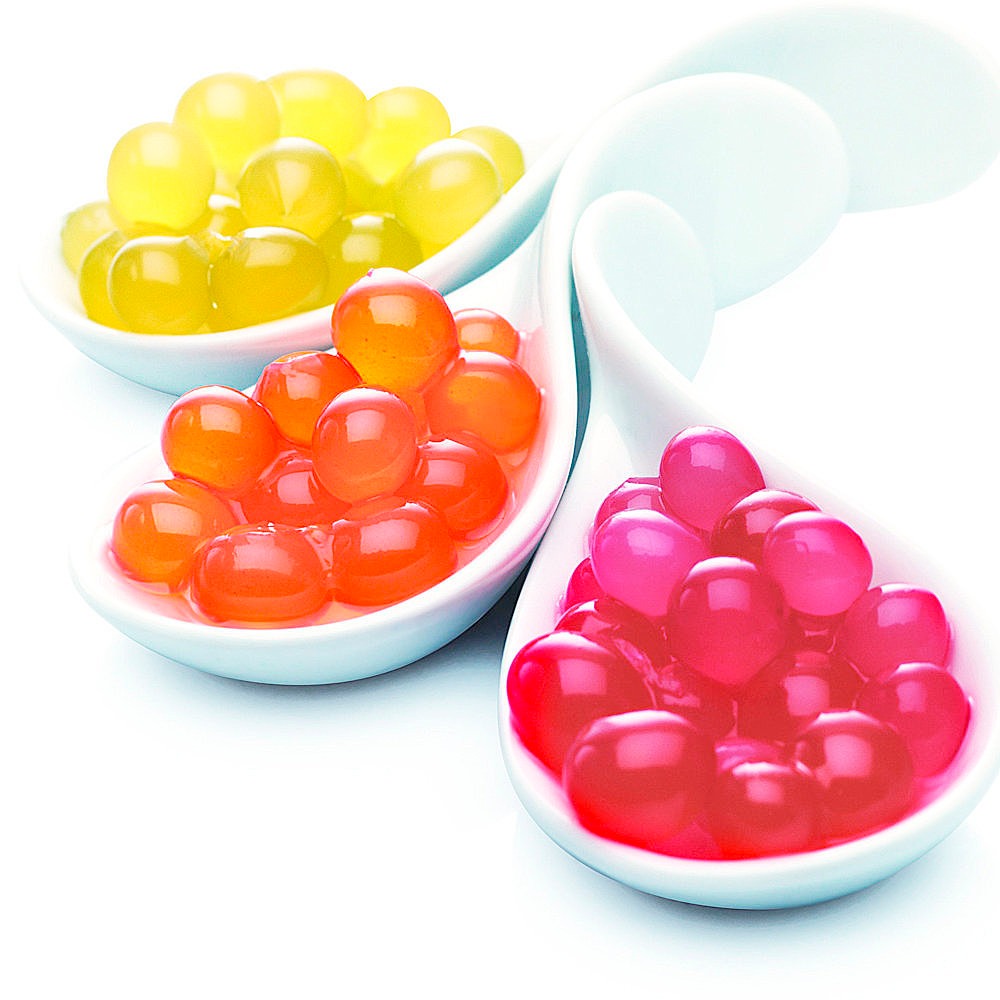Hydrocolloids!
In the macroscopic world they have importants influencing in the organoleptic properties, especially in the reology of food like the viscosity, the gelling and plasticity of our final product that change the taste, texture and the sensation at the moment of eat it. In the microscopic world we are interested in the chemistry as an structural level because some organic function are importants to predict the reaction or the solvent affinity of the raw material that we want to use.
 The hydrocolloids are used in the realization of edible films with a technique called esferification, ionic encapsulation or micro-encapsulation. The name depends of the substratum that you are going to use for the esferification. You can do it with lipids, juice, probiotics, etc, etc.
The hydrocolloids are used in the realization of edible films with a technique called esferification, ionic encapsulation or micro-encapsulation. The name depends of the substratum that you are going to use for the esferification. You can do it with lipids, juice, probiotics, etc, etc.Also, you need an encapsulating agent such as chitosan, nylon
membranes (used to catch enzymes) and different types of gums as agar-agar, xantan, guar, etc, etc. The objective is (sometimes) to preservate some properties like the humidity, flavour and the aroma.
There are to much papers of the studying of hidrocolloids. This is only one way to use them. In this blog is impossible to tell you all the functions that they are used to.
http://www.scielo.org.co/pdf/rfnam/v63n2/a20v63n01.pdf
but the components that cause the consistency or viscosity are carcinogenic? Maybe the hydrocolloid no but, you know some of this? :o
ReplyDeleteI did not know about the existence of the hydrocolids, which are very interesting and important in the future.
ReplyDeleteit is very insteresting, i don't have idea about this
ReplyDeleteIt is very interesting, you will learn how to prepare hydrocolids?
ReplyDeleteHydrocolloids are being investigated as well in Pharmacy.
ReplyDelete